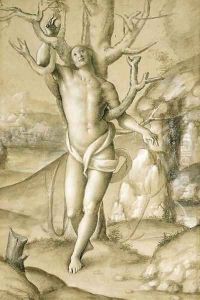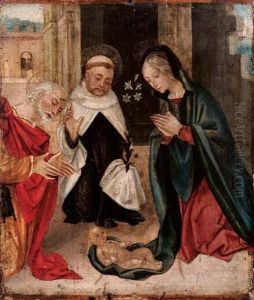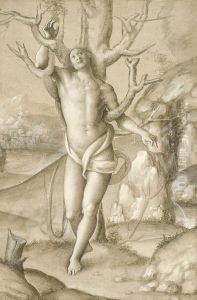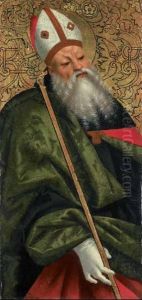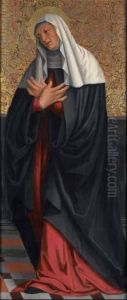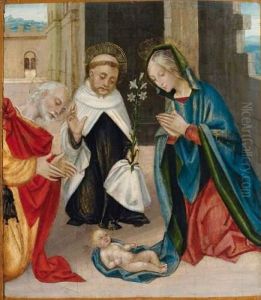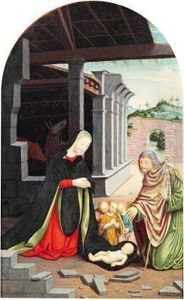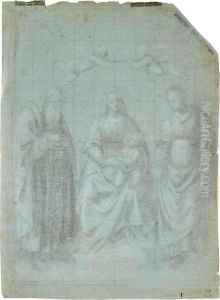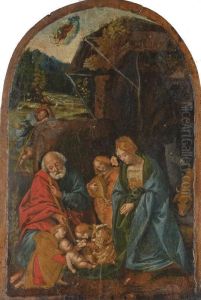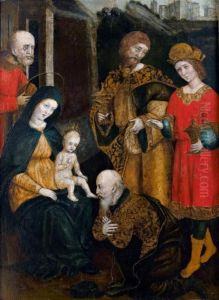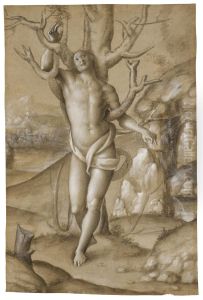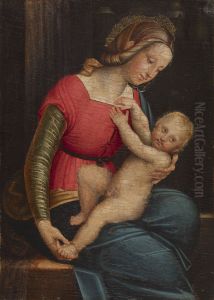Gerolamo Giovenone Paintings
Gerolamo Giovenone was an Italian painter active during the Renaissance period, particularly known for his works in the region of Piedmont, especially around Vercelli. His birth date is not precisely documented, but it is estimated to be around 1486 or 1487. Giovenone's contributions to art are recognized for their emotive expressions and detailed landscapes, which were somewhat innovative for his time, blending elements of the High Renaissance with the emerging Mannerist style.
Giovenone's training and early influences are not well-documented, but his work shows a clear knowledge of the contemporary Lombard and Piedmontese artistic trends, and he might have been influenced by artists such as Gaudenzio Ferrari, with whom he shares a strong sense of color and an affinity for complex, dynamic compositions. Despite the lack of extensive records on his life, Giovenone's surviving paintings provide valuable insights into the artistic environment of Northwestern Italy during the early 16th century.
Throughout his career, Giovenone was primarily known for his religious paintings, altarpieces, and frescoes. One of his most notable works is the altarpiece in the church of Santa Maria di Loreto in Vercelli, showcasing his mastery in depicting religious figures with a remarkable depth of emotion and a refined use of color. His works often featured intricate details, not only in the figures but in the landscapes and backgrounds, contributing to a comprehensive narrative scene.
Giovenone's later works exhibit an increased influence of the Mannerist style, characterized by elongated figures and an even more sophisticated use of color. Despite facing competition from other artists of his time, Giovenone maintained a distinctive style that earned him commissions and recognition in his region.
Gerolamo Giovenone's death in 1555 marked the end of a career that contributed significantly to the development of Renaissance art in Piedmont. While he may not be as widely recognized as some of his contemporaries, his work remains an important part of Italy's rich artistic heritage, offering insights into the transitional period between the High Renaissance and Mannerism. His legacy is preserved in the churches and galleries that house his paintings, serving as a testament to his skill and creativity.
